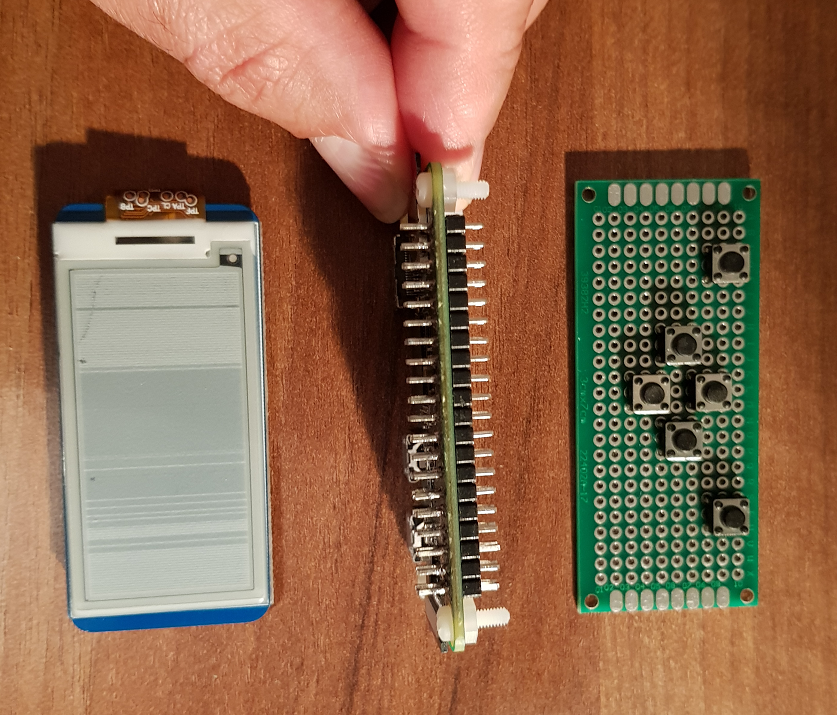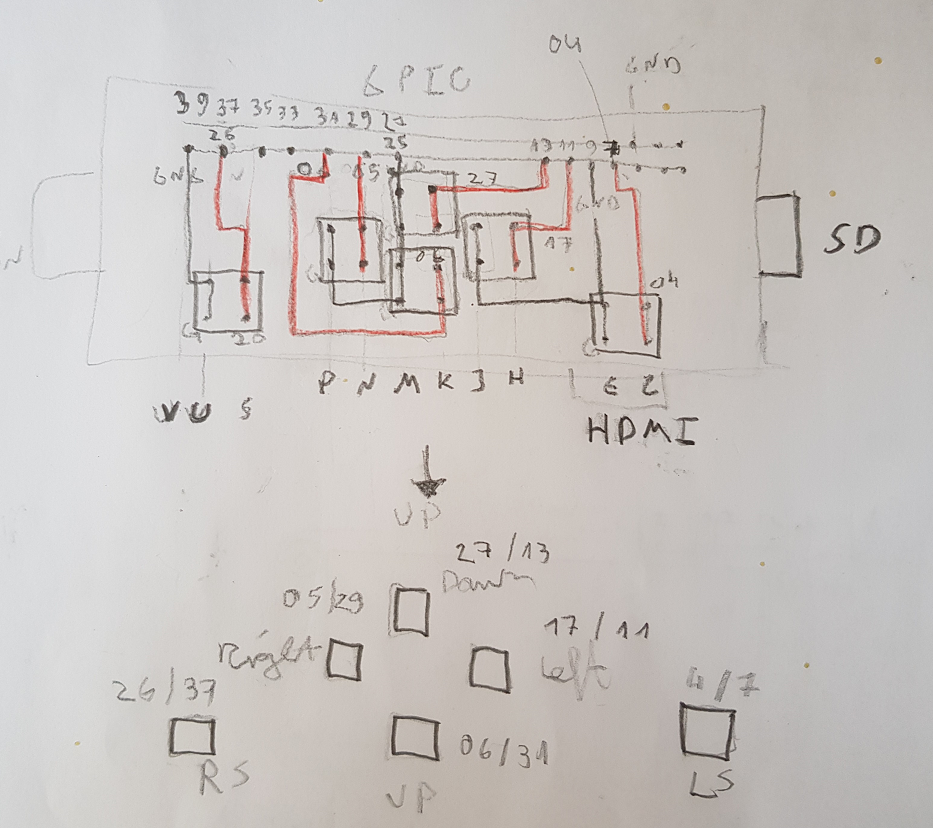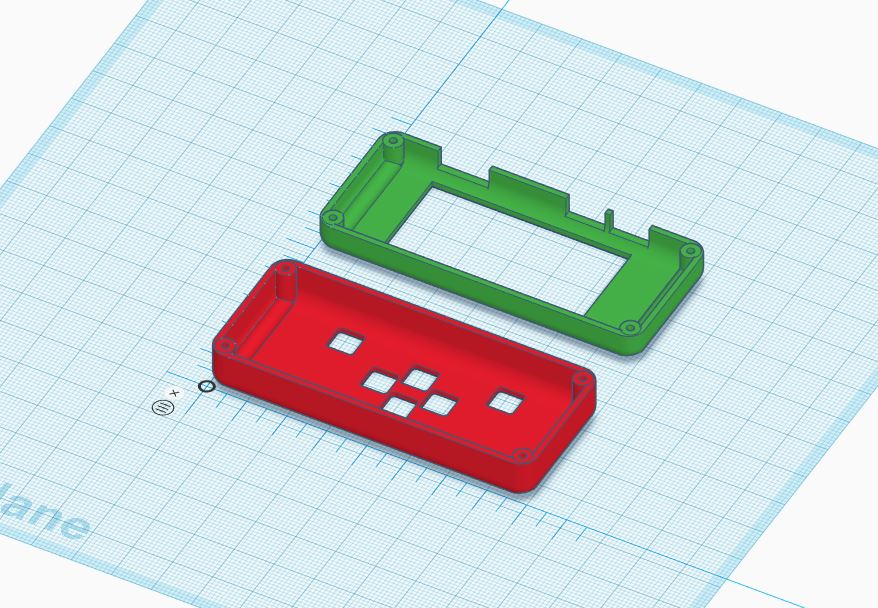UPDATE: HACKAYDAY featured StickPi! So honored!
I always wanted to have a sturdy and rigid Raspberry Pi that is mobile and as small as possible. Recently I designed a Raspberry Pi 3 plus 5 inch display, built-in keyboard and a battery / charging circuit. It’s nice as it’s about a DIN A5 paper sheet.
Then I came along these USB boards that you can pogo-pin to your Pi Zero which is similar in design to what the guy at NODE did.
When working with a Pi Zero, I wanted to connect via VNC so I can run Pixel desktop and Geany on the Pi to develop and run software. When doing so, you quickly want the Pi to display the Wifi and IP address it’s connected to. I chose an e-paper display from Waveshare (do yourself a favor an buy the balck/white display only, not the one with three colors as they don’t support partial update, i.e. they refresh very slowly!) and bought such a USB power board and attached the Zero to a battery:
Once you have this kind of display, you learn that the physical interaction with the machine is one way: consumption. And immediately, you think that it would be nice to have interaction methods to select a WIFI or shut down the machine or select operation modes, etc.
So I sat down and designed a PCB (not printed but wires on a protoboard with a pretty ideal size), to add some buttons for directions as well as two “shoulder buttons”:
To keep the design compact and as the e-paper display would consume the full GPIO, I soldered the pins on the Pi to go through the PCB:
I chose a wiring that can actually use buttons without additional resistors and so the whole system works with only input ports as well as GND:
This led to a compact design alltogether, see also the first version of a PETG designed case:
The case itself is designed in Tinkercad and I made the case available on Thingiverse:
There is still room for improvement for the case but right now I’m happy enough with it to actually keep it and write software. Querying the keys is really easy:
Finally see a little interaction of the buttons and the screen here, the software is really simple to query the buttons continually and display values on the e-paper:
(On the top left, you see the Raspberry Pi 3 case with the keyboard integrated, still not happy with that design, that’s why I haven’t published it yet.)
I may venture into actually designing (EAGLE files) and ordering PCBs for the button to make the whole thing more “defined” and better fitting the case.








